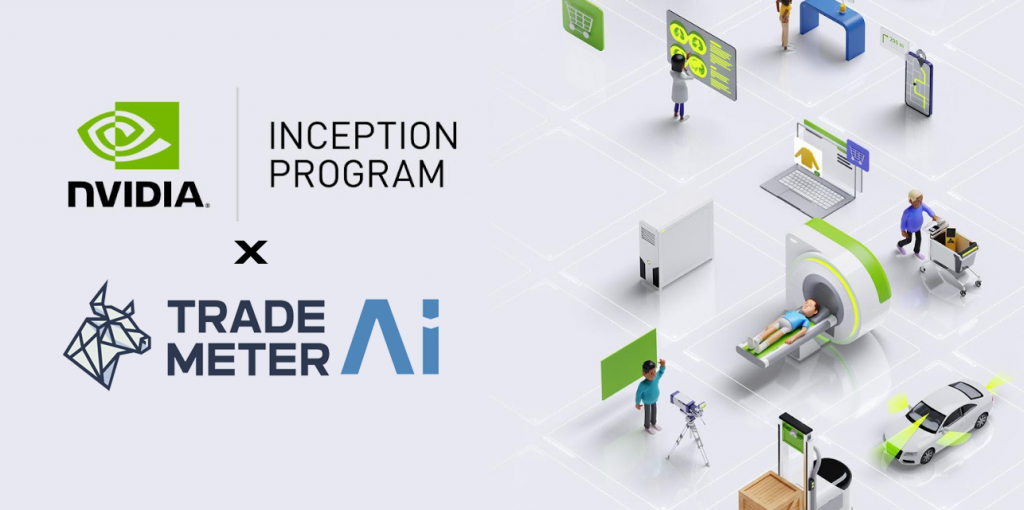20 Excellent Pieces Of Advice For Deciding On AI Stock Analysing Sites
20 Excellent Pieces Of Advice For Deciding On AI Stock Analysing Sites
Blog Article
Top 10 Tips To Customize Ai Trading Platforms To Your Strategy
AI trading platforms that predict/analyze stocks are known for their ability to customize strategies to meet the needs of their users. This allows them to adjust to specific goals and conditions, including risk tolerance. Platforms that have powerful customization capabilities can boost your trading efficiency. Here are 10 tips to evaluate the customization capabilities of platforms.
1. Evaluate Pre-Built Strategy Templates
Variety of templates: Check whether the platform provides an array of pre-designed strategies that can be used for various trading styles (e.g., day trading, swing trading, long-term investment).
You can easily modify the templates and adapt them to meet your requirements.
Performance history: See if the platform offers historical performance statistics on the an already-built strategy.
2. Review Custom Strategy Creation
Drag-and-drop tools Search for platforms that offer intuitive drag-and-drop interfaces for creating customized strategies.
Coding Options: If you are a skilled user, ensure that your platform supports custom coding.
Flexibility - Make sure that the platform you select permits you to set rules for entry and exit, as well as parameters for risk management, as well as other key components of your strategic plan.
3. Check for Backtesting Capabilities
Historical data. Verify whether your platform can provide sufficient historical data in order to backtest your strategy.
Configurable settings: Make sure you have the capability to change parameters during backtesting.
Performance metrics - Make sure to see if the platform has specific indicators of performance (e.g. the win rate, Sharpe coefficient or drawdown) for all strategies tested back.
4. Evaluate Real-Time Strategy Testing
Paper trading: Check if the platform supports paper trading and simulation modes to test strategies in real time without placing your money at risk.
Live testing is an excellent method of determining if your strategy can be tested in the real world market using small amounts.
Real-time adjustments: Verify whether strategies can be modified according to market conditions.
5. Assess Integration with Technical Indicators
Libraries for indicators: Make sure the platform has a full toolkit for technical analysis (e.g. MACD, RSI and moving averages).
Custom indicators: Ensure you can import or create custom indicators to match your strategies.
Make sure the platform allows you to mix multiple indicators into more complex strategies.
6. Check for Risk Management Tools
Stop-loss/take-profit: Ensure the platform allows you to set stop-loss and take-profit levels within your strategies.
Position sizing: Determine if you are able to set up rules for the size of your position (e.g. an amount fixed or a percentage of portfolio) to control risk.
Risk-reward-ratio: Verify the support of the platform to set the risk/reward ratios of individual trades or trading strategies.
7. Evaluate Multi-Asset Strategy Support
Asset classes: Ensure that the platform can handle multiple asset classes, like ETFs, stocks and options.
Cross-asset strategies: See whether you can develop strategies that use multiple asset classes (e.g. Hedging, pairs trading).
Market coverage. Check if the platform has market coverage that you're looking to invest in (e.g. US international, copyright).
8. Review the automation and Execution
Automated Trading: Check that the platform has the ability to implement strategies in a way that is automated based on rules predefined.
Types of orders - Make sure that the platform supports a range of order types that can be used to execute strategies (e.g. stop market, limit or stop).
Latency: Make sure that the platform you are using has a low latency when trading, especially if you are using high-frequency strategies.
9. Take a look at the Strategy Optimization Tools
Parameter Optimization: Ensure whether the platform provides tools for optimizing the parameters of strategies (e.g. genetic algorithms grid search).
Machine learning integration: Check that the platform utilizes machine learning for refinement or improvement of strategies.
Scenario Analysis: Determine if the platform supports testing strategies for different market scenarios (e.g. bull bear, bear or volatile).
Review the Community Feedback and User Reviews
User reviews: Examine user feedback to gauge the platform's effectiveness for strategy and personalization.
Community forums: See if the platform has an active community in which users can discuss and share their custom strategies.
Support resources - Ensure that the platform includes instructions and documents to help users create and improve strategies.
Bonus Tips
Trial period: Try the customization options of the platform without cost with a demo or demo.
Scalability: Make sure the platform can handle increasingly complicated strategies in your trading expands.
Support for customers Find out if there is support available for inquiries or concerns relating to strategy.
These tips will help you evaluate the customization options of AI trading platforms which can predict or analyze the market. This way you'll be able pick one that best suits your goals in trading, and lets you improve and implement strategies. Platforms that have strong capabilities for customization can assist you in adapting to the changing market conditions and boost the performance of your trading. Follow the top rated your input here on ai stock for blog advice including chart ai for trading, best stocks to buy now, ai stock, best ai for stock trading, investing ai, chart ai for trading, ai trading bots, ai investing app, ai copyright trading bot, ai bots for trading and more.
Top 10 Tips On Risk Management Of Ai Trading Platforms That Forecast Or Analyze Stock Prices
Risk management is a key component of every AI trading platform. It assists in protecting your capital while minimizing potential losses. Platforms with robust risk-management tools can help you navigate turbulent markets and make informed decisions. Here are the top 10 ways to evaluate these platforms' risk management capabilities:
1. Evaluation of Stop-Loss & Take-Profit Features
Configurable settings: Ensure that you can set the take-profit or stop-loss level for certain trades.
Find out if your trading platform supports trailing stop that adjusts itself automatically in the event that the market moves toward your.
Guarantees on stop-loss: find out if the platform offers stop-loss guarantees, which will ensure that your position will be closed at a specific price even in volatile markets.
2. Calculate Position Size Tools
Fixed amount: Check that the platform you are using allows you to adjust position sizes in accordance with a set amount.
Percentage of Portfolio: Find out if it is possible to define the size of your position in percentage of your total portfolio so that you can manage risk in a proportional way.
Risk-reward percentage: Examine to see if it is possible to determine the risk-reward ratio for specific trades or strategies.
3. Look for Diversification support
Multi-asset Trading to diversify your investment portfolio, ensure that the trading platform you select allows trading across multiple asset classes.
Sector allocation Check to find out whether there are any tools that can be used to manage and monitor exposure to the sector.
Geographic diversification. Make sure the platform can trade on international markets that spread geographical risk.
4. Evaluation of Margin and Leverage controls
Margin requirements: Make sure the platform clearly states the requirements for margin for leveraged trading.
Check to see whether you can establish leverage limits to limit risk exposure.
Margin call: Check that the platform is providing prompt notifications regarding margin calls. This could help keep accounts from being closed.
5. Assessment Risk Analytics and reporting
Risk metrics: Make sure the platform provides important risk indicators to your portfolio (e.g. Value at Risk (VaR), sharpe ratio, and drawdown).
Analysis of scenarios: Make sure that the platform allows you to create different scenarios for the market to determine the risks.
Performance reports - Verify that the platform has detailed performance reporting, including return adjustments for risk.
6. Check for Real-Time Risk Monitoring
Portfolio monitoring: Make sure that your platform provides live monitoring of your portfolio's risk exposure.
Alerts and notifications: Determine whether the platform is able to provide real-time alerts on events that are risky (e.g., margin breach and Stop-loss triggers).
Check the dashboards for risk. If you're looking to see a complete picture of your risks, be sure they're customizable.
7. Test Stress Testing and Backtesting
Stress testing - Make sure your platform allows you to stress test strategies and portfolios under extreme market situations.
Backtesting: Verify that the platform allows backtesting strategies that are based on previous data to determine risk and the performance.
Monte Carlo simulators: Verify that the platform is using Monte Carlo to simulate a number of possible outcomes to allow you to determine the risks.
8. Review Compliance Risk Management Regulations
Regulation compliance: Ensure that the platform is compliant with applicable risk management regulations (e.g., MiFID II in Europe, Reg T in the U.S.).
The best execution: Make sure that the platform is in line with the most efficient execution methods. The trades will be executed at the lowest cost possible to minimize the chance of slippage.
Transparency: Ensure that the platform offers clear and transparent disclosures about the risks.
9. Look for parameters controlled by the user.
Custom risk rules: Ensure that the platform you select lets you create your own custom risk management rules.
Automated controls for risk You should check whether your platform is able to apply risk management rules on the parameters you've defined.
Manual overrides Determine for the possibility of manually overriding the risk management system in a situation of emergency.
Review Case Studies and User Feedback
User feedback: Review the opinions of users to determine the platform's capacity to manage risk.
Case studies: Search for case studies or testimonials that showcase the platform's strengths in the field of risk management.
Community forums: Find out whether the platform has an active user community where traders discuss risk management tips and strategies.
Bonus Tips
Trial period: You may use a demo or free trial to test out the risk management tools on the platform.
Support for customers: Make sure the platform offers robust support regarding risk management related problems or queries.
Educational resources: See whether the platform offers educational resources or tutorials on best practices in risk management.
If you follow these guidelines and techniques, you will be able to assess the risks management capabilities of AI platform for analyzing and predicting stocks Be sure to select the one that can to protect your capital and limit potential losses. Effective risk management tools are vital to navigate the turbulent markets and achieving trading success. Follow the top rated get more info for more advice including stock analysis app, ai trading app, incite ai, trader ai intal, ai stock picker, ai stock predictions, ai for copyright trading, trading ai, invest in ai stocks, ai trading bot and more.